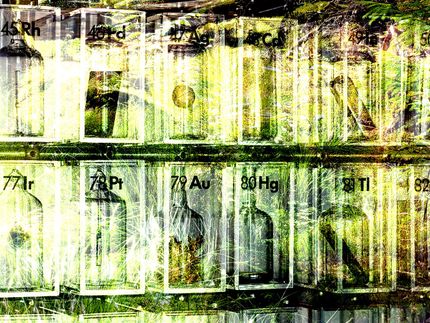Ozone recovery may be delayed by unregulated chemicals
Advertisement
Recent increases in an unregulated ozone-depleting substance, could delay recovery of Antarctic ozone levels by 5-30 years, depending on emissions scenarios.

41330; pixabay.com; CC0
The findings suggest that a previously ignored chemical called dichloromethane may now be contributing to ozone depletion and should be looked at to improve future ozone predictions.
Long-lived chlorine species, such as chlorofluorocarbons (CFCs), led to depletion of the stratospheric ozone layer in the 1980s, most drastically seen in the Antarctic.
After introduction of the UN Montreal protocol in 1987, which regulated emissions of ozone-depleting substances, stratospheric ozone began to recover and is projected to return to pre-1980 levels in the second-half of this century.
The Antarctic 'ozone hole' is expected to fully recover sometime between 2046 and 2057.
However, atmospheric concentrations of dichloromethane -- a short-lived, ozone-depleting substance not regulated by the Montreal Protocol -- have risen in recent years and could be contributing to ozone loss.
Study lead author Dr Ryan Hossaini, from the Lancaster Environment Centre at Lancaster University, said: "Dichloromethane is a man-made ozone-depleting chemical that has a range of industrial applications. Unlike CFCs and similar long-lived gases that are responsible for most ozone depletion, dichloromethane has a short atmospheric lifetime so has not been controlled by the Montreal Protocol. Despite this, increased production has led to a rapid increase in its atmospheric concentration over the past decade.
"While ozone depletion from dichloromethane is currently quite modest, it is uncertain how the amount of this gas in the atmosphere will change in the future. Our results show that continued sustained growth in its concentration could substantially delay recovery of the ozone layer, offsetting some of the future benefits of the Montreal Protocol."
Dr Ryan Hossaini of Lancaster University and colleagues use simulations with a global chemical transport model to examine the sensitivity of future stratospheric chlorine and ozone levels to sustained dichloromethane growth. Measurements of dichloromethane in the atmosphere over the past two decades, provided by scientists from the National Oceanic and Atmospheric Administration (NOAA) in the United States, were also analysed.
Study co-author Dr Stephen Montzka from the NOAA added: "The increases observed for dichloromethane from our measurements are striking and unexpected; concentrations had been decreasing slowly in the late 1990s, but since the early 2000s have increased by about a factor of two at sites throughout the globe."
"It is uncertain what is driving this growth. However, it could be related to increased use of this chemical as a solvent in place of other long-lived chemicals (e.g. CFCs and HCFCs) that have been phased out, or from use as feedstock in the production of other chemicals."
Their projections show that continued dichloromethane increases at the average trend observed from 2004-2014 would delay ozone recovery over Antarctica by 30 years. If dichloromethane concentrations stay at current levels, the delay in recovery would be only 5 years. Although the future trajectory of dichloromethane is uncertain, without any regulations on emissions, it is likely concentrations will fall somewhere in between the ranges presented here.
Study co-author Professor Martyn Chipperfield, from the University of Leeds' School of Earth and Environment, said: "We need to continue monitoring the atmospheric abundance of this gas and determine its sources. At present, the long-term recovery of the Ozone Layer from the effects of CFCs is still on track, but the presence of increasing dichloromethane will add some uncertainty to our future predictions of ozone and climate."
The ozone layer shields Earth's surface from certain wavelengths of harmful solar ultraviolet (UV) radiation that would otherwise be detrimental to human, animal and plant health. Ozone also absorbs terrestrial infrared (IR) radiation and changes in its abundance can influence climate.
On the broader implications of the findings and outlook, Dr Hossaini said: "Ozone is an important climate gas and changes to its abundance, including due to the increasing influence of dichloromethane, could be relevant for refining future climate predictions.
"We should be mindful to the growing threat to stratospheric ozone posed by dichloromethane and similar chemicals not controlled by the Montreal Protocol. There is work to be done to better understand and quantify their main sources to the atmosphere."

































































